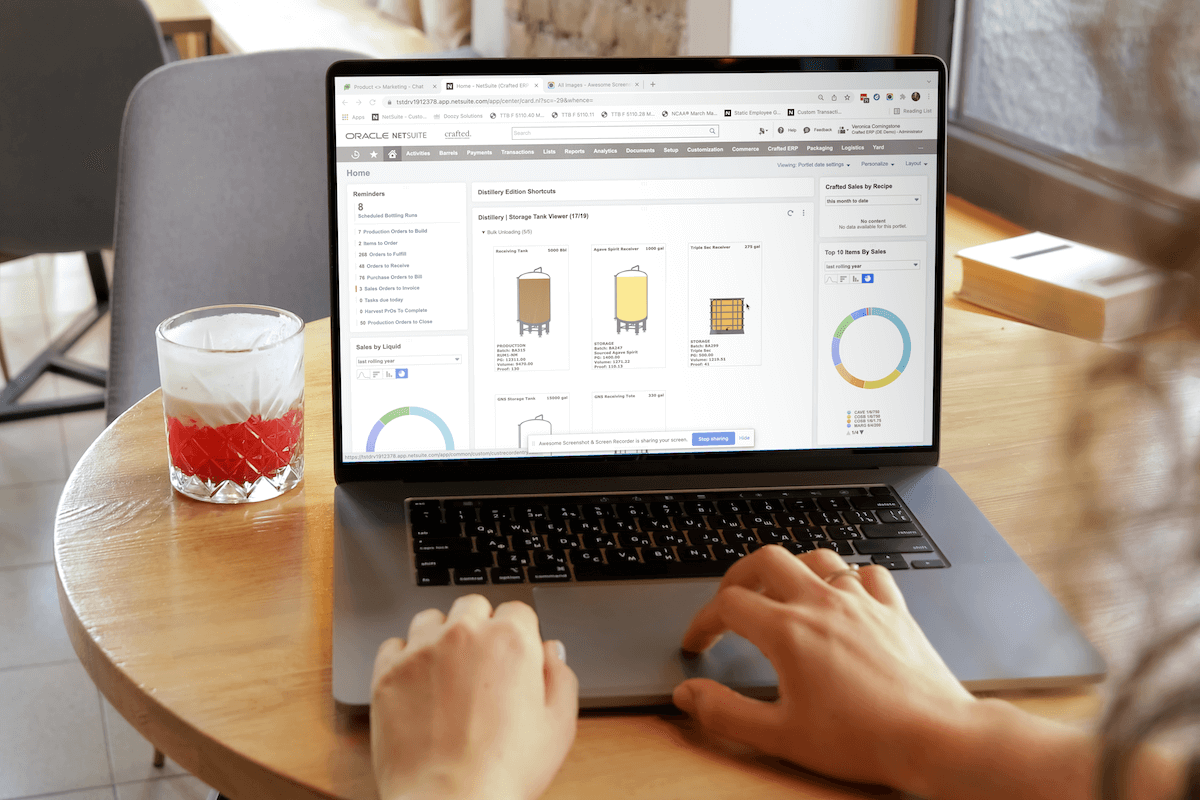A brewery business plan is the foundation of your business, guiding your vision and helping you turn ideas into action. It’s your roadmap for navigating the complexities of starting, running or growing your brewery.
Whether you’re preparing to open your doors, expanding production or fine-tuning your operations, a clear plan helps you stay organized, focused and ready for what’s next.
A carefully constructed business plan serves as a strategic guide, helping you set goals, understand your market and make informed decisions. It outlines every step, from managing daily operations to planning long-term growth, keeping you on track and ensuring your efforts are aligned with your vision.
A detailed plan provides clarity and direction in an industry as dynamic and competitive as craft beer. It equips you to face challenges, seize opportunities and grow your business confidently.
“There is a foundation to breweries, brewpubs and taprooms alike, that is the common thread of all businesses. That foundation is a well-constructed business plan,” explains Graham Rausch, membership engagement coordinator for the Brewers Association.
If you’re seeking capital or a small business loan, financial backers will look at a comprehensive business plan to gauge whether or not your idea is viable long term. It helps lenders understand what your goals are and whether or not your business is a smart investment choice.
A Plan That Works for Craft Breweries
So, how do you write a business plan?
The first step to creating a brewery business plan is to decide on a format. The SBA outlines two primary options:
- Traditional plan: This is the most common format, typically running dozens of pages. It’s detailed and ideal if you’re seeking financing from banks or traditional investors.
- Lean startup plan: Short and concise, often as brief as a single page. This format is great for simple business models or for those looking to regularly refine their plan.
Take some time to explore online resources. You can find plenty of brewery business plan examples and templates to help you get started.
No matter the format you choose, certain core sections are recommended for a microbrewery business plan, a craft brewery business plan, or for any other brewery business model. Let’s dive into each.

Brewery Business Plan Sections
Section 1: Executive Summary
An executive summary is the first section of your business plan. It provides an attention-grabbing, quick overview of your brewery and why it will be successful. Include your mission statement, type of brewery, who will lead it, its employees and their roles as well as the location(s).
The executive summary should be engaging and clearly depict your vision and growth goals. It should include competitive advantages and any differentiators that set your brewery apart from the rest.
Section 2. Operations
Describe the day-to-day operations of your brewery. This critical part of your plan will outline how your brewery will create value. Tout any technology you plan to use to enhance brewery operations. Keep in mind you may be using your business plan to shop around for investors.
Your investment in a technology platform, such as ERP, shows investors you are serious about your new business or about growing your existing one. If you have a long-term technology strategy, list any future upgrade plans.
San Francisco’s Fort Point Beer Company is a great example of this. The brewery uses Crafted ERP Brewery Software to gain a 360-degree view of its operations. Mike Schnebeck, CFO and director of innovation, says having all the data about his operation — including historical — at his fingertips has given him the insight he needs to track performance over time.
“Crafted does a really good job of tying every aspect of the business together. I’m able to access and combine all the information that I need … and a good understanding of how every part of our business ties together,” Schnebeck says.
Don’t forget: having that information will ensure you stick to your business plan’s goals.
Section 3: Market Analysis
Use this section to highlight your target market and emphasize why your business is worth the investment. Maui Brewing Co. uses data insights to better understand customer behavior and pinpoint areas for product diversification.
Maui’s President and COO Scott Metzger said, “It gives us clear, timely insight into our business and facilitates data-driven decision making that wasn’t possible before. Our product offerings now span across beer, seltzer, spirits, RTDs, sodas and coffee. This diversification gives us multiple entry points to begin customer relationships, as many of these customers span multiple categories.”
Section 4: Organization and Management
This section outlines your brewery’s leadership and operational structure — vital to internal alignment and external credibility.
- Leadership: Introduce the key players, detailing their roles, responsibilities and relevant experience. Highlight their unique strengths, such as expertise in brewing, operations, finance or marketing. If you have a management team, explain how their combined skills drive success.
- Staffing plan: Outline the positions you’ll hire for — production, taproom, sales, distribution and admin support — and any plans for growth. Demonstrating a well-thought-out staffing strategy shows your business is structured for efficiency.
- Legal structure: Specify whether your brewery will operate as a sole proprietorship, partnership, LLC or corporation. Briefly explain why this structure suits your needs (e.g., an LLC for limited liability and flexibility or a corporation to attract investors).
A clear, strategic organization plan assures stakeholders your brewery is set up for long-term success.
Section 5: Your Products
Describe the type of beer you’ll make and any food or additional products you plan to sell.
Technology platforms like Crafted offer a recipe library and management tool to keep your recipes secure, organized and updated. Such platforms can even help with recipe formulation and cost analysis to ensure you stay on your business plan.
Be sure to include your ingredient suppliers and note if you plan to pursue any certifications for your products, such as organic.
Section 6: Your Marketing Plan
How will you attract and retain customers? Detail that in this section.
Are you planning to kick your social media into high gear? Will you rely on influencers or coveted celebrity endorsements? This is where you’ll cover your marketing strategy, including budget, packaging design and advertising campaigns.
Section 7: Your Financial Plans
Brewing equipment requires a significant investment. Itemize the funding you need and describe how it will be used.
You also need to include financial projections. Your goal is to convince the reader your business is stable and will be a financial success.
ERP platforms serve as a great asset to breweries that need detailed reporting and financial information. Brewery ERP software combines all purchasing, production, inventory, sales, compliance and accounting information into one location for easy access.

Your Brewery Business Plan is a Living Document
Think your business plan is complete? Not so fast, my friends. It’s actually just the beginning. This is a document you’ll review, update and adapt as your business grows and ages.
The good news is technology like Crafted ERP is a great way to track your company’s performance to know when it is time to adjust your brewery business plan. Crafted can help you stay on track and move toward your business goals.
And one last piece of advice: Let whatever it is that makes your craft brewery unique shine through on your business plan. Craft beer is a competitive and evolving industry and you want to showcase and highlight your brewery’s true value. Want to learn more about how brewery software can help you achieve your vision? Reach out to our team or learn more about Crafted ERP, we can’t wait to connect with you.





